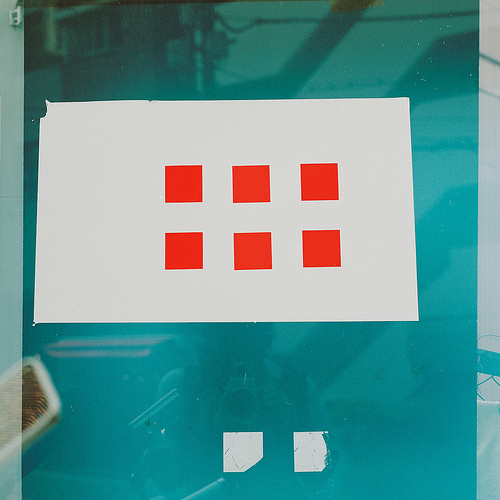Month: December 2007
Boy terror
The rest of that horror essay I was quoting yesterday debates a super-Freudian interpretation of the “final girl” in slasher films— the one who doesn’t die— as a simultaneous castrator and phallus-envier. Cut something off that monster and wave your big knife in the air, ladies. The horror can’t end until the cocks are properly distributed according to your moral fortitude. Meh.
After all the feminist sexuality reading I usually do, it is bizarre to read an essay where somebody takes Freud seriously, even temporarily. Nobody seems to get away with discussing Freud’s take on sexuality without at least a disclaimer about the myth of vaginal orgasms, but in discussing horror apparently it is acceptable to dive into repressed womb envy and castration complexes with all sincerity. Maybe the academic tone of the essay disguised the author’s disdain, but it seemed like she was buying it.
I got a lot more interested when she started pondering why it has been so much easier to have women transition into monster-killing hero roles on film than to spend any screen time on men screaming in terror. Gender as theatre, this is more my speed. It actually made me sad for guys, to think of (mostly) guys in the ’80s making slasher movies for (mostly) other guys and having to kill all the men quickly in the distance while the women got butchered in close-ups. The audience’s only chance to identify with fear in most of those movies was through feminine characters. Men had a very limited range of possible emotions and options for expressing them. How were people supposed to learn about masculine fear? That’s terrible!
The author pointed out that the cliched lack of stereotypical femininity in the surviving girl (always the smart one, or the one wearing pants, or the one who doesn’t put out… also usually the one named Stevie or Georgie or something) might not just be about misogynistically killing all the feminine or sexually active women. She suggests it’s about giving guys a somewhat mannish hero to identify with, since an actual terrified man is off limits. The last girl is the character who realizes the full scope of the danger— she’s the most afraid, and spends the most time being afraid. Those are the interesting emotions, the ones that prompt the shivers and startles. I think it’s terrible that it’s still largely taboo for that to be a man’s role! Hopefully my kids will be able to activate their repressed fears with screaming victims of all genders.
If anybody knows some movies where men scream and cry in terror (preferably half naked?), do tell. I feel like I must know some, but all I can think of at the moment is Deliverance. Maybe some war movies would fit the bill.
Red and blue, another handpainted sign
Red and blue, handpainted sign
“Babe of the day”
Casey phoned the other day to ask about my top photos of undressed women, as a response to seeing one of those lame “babe of the day” widgets on somebody’s Facebook profile. (I think he wanted to build an arsenal, in case he had the opportunity to unleash it on somebody.) I am pleased that somebody thinks I am a potential resource for images of people who are sexy in the body hair and bellies kind of way, but I don’t have a stash of that stuff at all.
For a start, I thought of Rose and Olive, photographers I found awhile ago, I think on Warren Ellis’ blog. Their photos are often quite posed, and they seem caught up in starving artist glamour and that artier version of girls gone wild that hipsters like (wet shirts, polaroids, poetry…), and they have a blog at Nerve.com which is a creepy place to have a blog… and the photo above is one of only two black models in their entire archive as well as one of a very few models who look older than nineteen and aren’t showcasing skinny bony shoulders… but also, they seem to know that wide thighs and forehead wrinkles and messes are beautiful, and they seem sincere, so I pick and choose from their photos.
I appreciate the love of armpits, textures and complicated facial expressions going on in this photo, and the way the model is kinda subverting a classic pin-up pose. It makes me want to be on that roof, in that light, touching skin with somebody. So this might go in my babe of the day stash, if I had one.
Imax, slasher films, pornography
I feel a meandering mind-map coming on, starting from an essay about slasher movies by Carol Clover (roughly summarized here ) that I read in this anthology about gender in myth.
On the civilized side of the continuum lie the legitimate genres; at the other end, hard on the unconscious, lie the sensation or ‘body’ genres, horror and pornography, in that order. …
It is a rare Hollywood film that does not devote a passage or two— a car chase, a sex scene— to the emotional and physical excitement of the audience. But horror and pornography are the only two genres specifically devoted to the arousal of bodily sensation. They exist solely to horrify and stimulate, not always respectively, and their ability to do so is the sole measure of their success…
I’ve seen a lot of people try to show that horror and pornography are related, usually based on some inarticulate statement about the similarity of sex and death. This bodily-sensation aspect seems like a more accurate connection. It’s got me editing my ideas about pornography (again), too.
For the last couple of years, my working definition has been that something is pornographic (to me) when it is presented for its own sake with no intention to communicate further meaning. Literal as opposed to symbolic, I guess. Showing literal sex rather than any experience of eroticism, or showing literal blood and gore rather than communicating a meaning of injury or death or fear (a la gore-porn). I don’t mean that as a diss to actual porn, more as an explanation of why I call Cute Overload cute-porn, and why I sometimes object to the ways other people use hyphenated, non-sexual porn labels. (I’m not sure I experience the Ikea catalog as storage-porn just because it shows a lot of shelving.)
This sensation definition is way simpler, and avoids having to argue about what is meaningful or symbolic. Since porn is some of the most intensely deconstructed media around and easily supplied with symbolic meaning, I think this simple sensation definition is a lot more accurate too. So thanks for that, early nineties essay collection.
Thinking about movies that are made for my body got me thinking about imax. All I want from a six-story tall movie is a strong sense of vertigo! I see an imax film about once every two years, but in my limited sampling they seem to be getting less motion-sick overall. Anybody have better evidence on that? (Tosczaks, or other bearers of yearly passes?) At the least, I’ve been disappointed with the imax films I’ve been seeing. I don’t want a plot at the imax, I want a bodily experience. More helicopter shots going over a cliff, please. I want imax to be more pornographic. Imax has not been fulfilling its potential.
So yup. The other idea I want to store here is about “legitimate” genres. I don’t really buy the idea that they’re less focussed on bodily sensations. The most pretentious, high-class films I’ve seen could be called superiority-porn. Feeling superior is a real sensation, although not often acknowledged as a physical/chemical state. I just dug up a clip from the Helvetica movie where Erik Spiekermann explains that he just likes looking at type. “Other people look at bottles of wine, or whatever, or you know, girls’ bottoms. I look at type.” He looks; it feels good. I’ve only seen the trailers, but that documentary is clearly modernist-typography-porn, and totally classy. (Or, ahem, neutral.)
The pretense seems to be that some cinematically-induced sensations are intellectual, rather than bodily, which actually seems very similar to my original working definition about pornography being devoid of meaning. So again, why am I reading anthologies about symbol and myth in these “body” genres if they are so literal and physical? This seems like a very weird manifestation of the usual classist aesthetic distinctions, where “legitimate” good taste just happens to be whatever working class / uneducated / trashy people don’t appreciate. Classy movies are secretly about sensations, and trashy movies are secretly full of cultural symbolism. Oops.
I’m probably specifically bad at this game— personality quiz questions on the theme of “do you pay more attention to rational thoughts or gut feelings” make my head explode, because surely thoughts and feelings exist in the same soup. I mean, you have to feel whether you’re being honest about your logic; I don’t know any other way. From now on I’m paying special attention to how my body feels when I watch fancy art films.
Red and blue, graffiti
i wonder if the heart symbol is a joke. i’m also having a lot of cognitive dissonance concerning those substitute/symbolic Os and the idea that letters are things, not pictures of things, while words are not things, but pictures of things. this leaves the graffiti approximately nowhere, but i still like the colours.
Persepolis, surprises, posting to the future
This year’s Mystery Movie surprise screening at Cinecenta was Persepolis! I’d never been before, but the idea is that they screen something anticipated that hasn’t been released over here yet. Our only guess was that it might be that crazy Bob Dylan movie with multiple people trading the lead role… and then as soon as we had any kind of guess, I was worried that when we were wrong it would be disappointing. Surprises are fragile.
Seeing the film come up in black and white animation was so optimal that it felt sort of charming. This was the only upcoming movie I’ve been looking forward to, and almost the only one I even knew anything about. It’s hard to be more fun than anticipation, but I don’t think that accomplishment was the charming part. A guy from the Cinecenta staff had come out and introduced the screening beforehand, so already it was feeling like a human social event rather than a commercial transaction, and then it turned out to be a movie made by people I could picture in my head from watching the little making of feature on the movie website. Lots of people involved, rather than only vague forces of fame and culture and money. I think that was what felt so warm and fuzzy. (Maybe especially after considering a movie about Bob Dylan as a sort of opaque, unknowable icon?)
I don’t understand why more cinemas don’t put an effort into spectacles and gimmicks like this on a regular basis. Surprise movies (old or new) are going on my local cinema wishlist, along with having a human introduce each screening, offering table seating, downloadable mp3 commentary tracks, loveseat-style seating in more places than just the back row of The Roxy, and beer in non-plastic containers.
I’m not much for movie reviews, but I suppose I should mention that I liked Persepolis. Funny parts, sad parts, angry parts, cute parts, and a lot of characters processing ethics out loud, and integrating external wars and politics with internal, personal feelings. The animation was very beautiful. (And boy do I like the various Arabic Persian nose shapes that Satrapi draws.) I think you could check out the books and the movie in any order without wrecking anything.
This whole episode has been a curious test of my 7-day posting lag. When I realized which film was showing, I felt like I’d been hoarding information because none of my companions could read the future archives of my blog, where I’d stashed links and details about the movie. That’s exactly counter to my anti-exclusive motives for posting to the future. And then I felt disappointed that I wanted to write a follow-up post when the first thing I wrote about Persepolis might be due to publish less than a week in the future— my follow-up was at risk of being weirdly late. It turned out to be pretty well-timed after all, but it is hilarious the way media influences real life reactions. This is more disconcerting than the “I wish I’d brought my camera / Kodak moment” feeling.
Red and blue, grids
Reading Marjane Satrapi interviews
A hand-animated movie version of Persepolis, Marjane Satrapi’s two-part graphic novel about growing up in Iran during the 1980s Islamic Revolution, will apparently be out on December 25. I’m curious about this movie. I read the first of the two books quite awhile ago, and I remember liking it, but I’ve been doing a lot of thinking and learning since then and I wonder how I’d find it now. I think it has promise.
Out of this curiosity, I’ve been reading a bunch of interviews with Marjane Satrapi. She’s pretty opinionated and direct, so even though the same topics come up over and over, I like to read her responses.
Most press I’ve seen about her is by writers who see her books as “complex,” because she writes about “good” people who do bad things and “bad” people who do good things. In interviews, she talks a lot about dealing with people as individuals rather than making assumptions based on their culture or race (that really doesn’t sound complex). But in this recent promo interview in the NY Times, the journalist seems to want Satrapi to act as an anti-fundamentalism or anti-Islam spokeswoman, rather than taking the usual “complex,” general progressive stance.
All that intro (hmm…) so that I can announce: I love the turn that interview takes, right here.
Your books denounce Islamic fanaticism, particularly as it curtails the rights of women. Is that your main theme? Oh, no, not at all. I don’t consider myself as a feminist but more a humanist.
Still, in your work, you are constantly contrasting your love of food, smoking and sensual pleasures with the acts of self-denial demanded by the mullahs, like wearing a chador. It’s a problem for women no matter the religion or the society. If in Muslim countries they try to cover the woman, in America they try to make them look like a piece of meat.
Are you suggesting that veiling and unveiling women are equally reductive? I disagree. We have to look at ourselves here also. Why do all the women get plastic surgery? Why? Why? Why should we look like some freaks with big lips that look like an anus? What is so sexy about that? What is sexy about having something that looks like a goose anus?
I never really thought about goose anatomy. I looked when I was on a farm in France.
I am making an effort to barf more on this blog, and to write long-winded, feelings-based rambles like when I first started making the vagina website, ages ago. But I am still self-conscious about it. I have realized that even though I was always in favour of keeping my various websites fairly integrated and putting the vagina website on my resume etc, it’s been a really long time since I wrote anywhere that I actually expected my friends might read, rather than just writing for internet strangers. Not as fearless as I thought. So, working on that. Fewer “this sure is long” disclaimers in the future.
Future, novelty, anti-competition
I’m currently posting at least seven days in the future, and I kind of dig it. At first, I just wanted to post a couple of things that would pop up on December 1, to give myself a deadline for building the new site templates. But now I like this restriction, that everything must lag by at least a week. It eliminates some kinds of elitism and exclusivity— I can’t be first, I can’t be fastest, I can’t be in the loop. Blogs are such a pro-novelty, pro-immediacy, pro-echo-chamber technology that putting a mandatory delay in there is interesting to me. And funny. It already makes the site seem strangely private, because I can see into its future and go there alone.
Red and blue, glass and shoes
When I wore mary janes a lot, I used to be into the toes turned in thing. This photo is suddenly making me uncomfortable about it, presented like that with no irony at all regarding women in fancy shoes standing like little girls. I’m hoping my general hairiness was enough to contrast and balance the baby toes.
I had never related the toes to the shoes until last week. I noticed that when I wear my boots I tend to stand like Captain America, feet planted especially wide. Design affordance, I guess. Superhero boots afford superhero stances.






